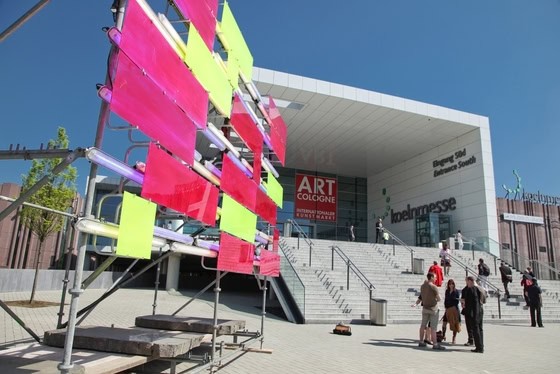Art Cologne is a child of the 68 generation: One wanted to break out of the private atmosphere of a gallery and meet the public where it has been assumed for centuries in all sectors of the economy: at trade fairs and markets. Contemporary art was hard to sell in post-war Germany, and the museums were dealing with that avant-garde which had been defamed by the National Socialists. Cologne's then cultural commissioner Kurt Hackenberg donated the Gürzenich to the galleries rent-free but collected the entrance fees. The audience traveled from all over Germany. They were young and curious. The successful model of the art fair was born.
In 1968, the fair moved to the more spacious Kunsthalle, in 1974 to the Rheinhallen, and today it is located in the new exhibition halls. The first collectors appeared. They bought and bought and bought. The world champion in collecting became Peter Ludwig. He and his wife Irene not only generously gifted Cologne. From the very beginning, there was competition, which is known to invigorate business. Since not all galleries that applied were allowed to participate, more and more alternative offerings took place in the context of Art Cologne. Examples were or are the events of "Prospect" in the Kunsthalle Düsseldorf, the "International Art and Information Fair" in Düsseldorf, the "Art.Fair" as a counter fair, or the "Liste Köln".
However, Art Cologne always made a comeback. The mood barometer of collectors, visitors, and critics fluctuated according to economic conditions. Art Cologne was either downsized or expanded, became more classical or younger. <br><br>Today it is accompanied by a rich parallel program. The very young galleries are now called "New Contemporaries," their booths are subsidized. The former "Förderkojen" have also internationalized, at least in name. They now call themselves "New Positions," but still show an artist selected by a jury, and then the "Open Space" opens up, the open area for artistic projects.
When the collector Harald Falckenberg received the Art Cologne Prize in 2009, he wondered why, as a Hanseatic, he traveled to this fair year after year and answered himself: Cologne was one of the co-founders of the Hanse in the Middle Ages. Back then, the couple Dürer traveled from market to market, selling their copper engravings even in Cologne. The sheets were hung on a wire. Today, a sales stand and primitive hanging are no longer sufficient for the buying and selling. The Dürer sheets have also become more expensive.


